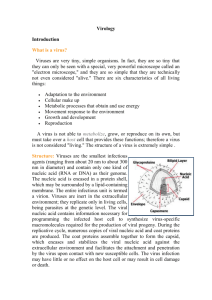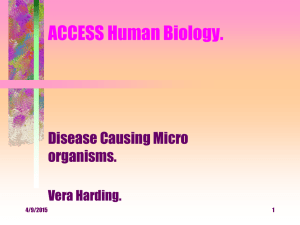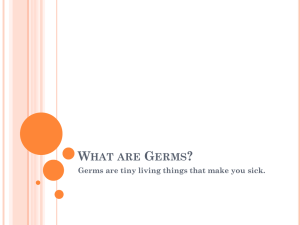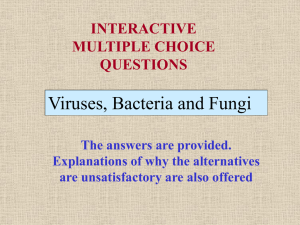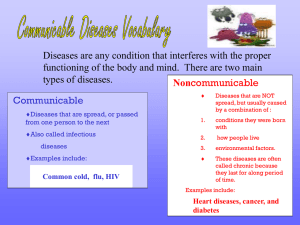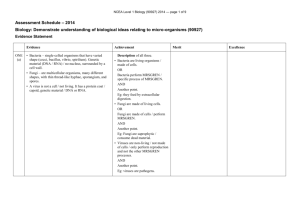ch 7 study guide - Stephanie Dietterle Webpage
advertisement
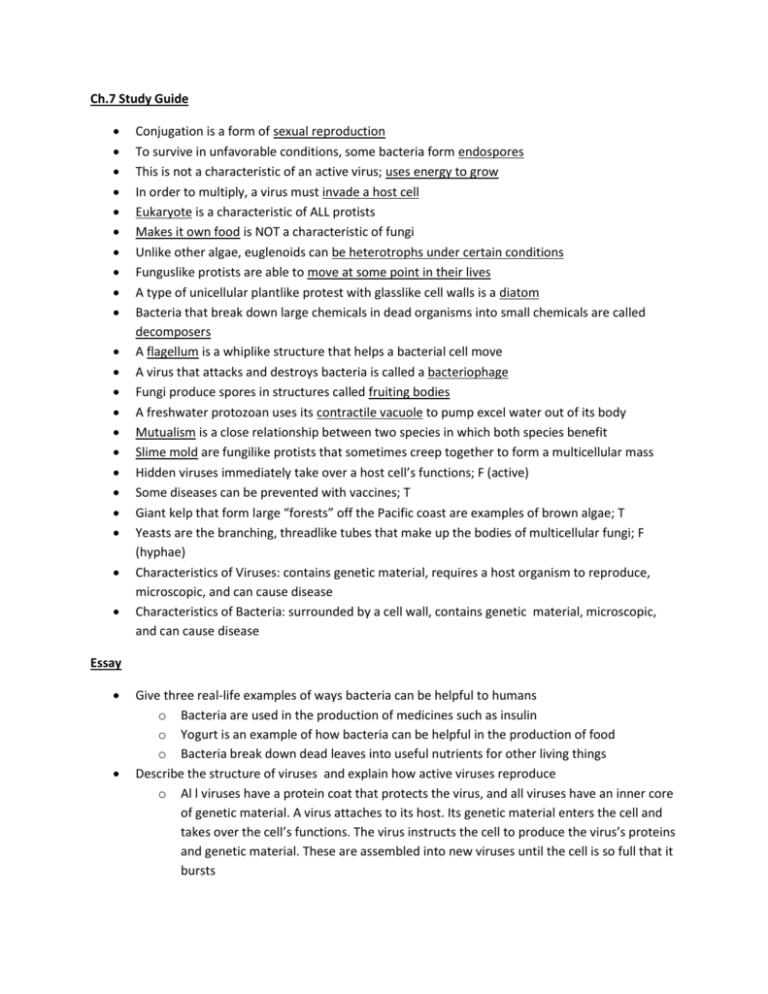
Ch.7 Study Guide Conjugation is a form of sexual reproduction To survive in unfavorable conditions, some bacteria form endospores This is not a characteristic of an active virus; uses energy to grow In order to multiply, a virus must invade a host cell Eukaryote is a characteristic of ALL protists Makes it own food is NOT a characteristic of fungi Unlike other algae, euglenoids can be heterotrophs under certain conditions Funguslike protists are able to move at some point in their lives A type of unicellular plantlike protest with glasslike cell walls is a diatom Bacteria that break down large chemicals in dead organisms into small chemicals are called decomposers A flagellum is a whiplike structure that helps a bacterial cell move A virus that attacks and destroys bacteria is called a bacteriophage Fungi produce spores in structures called fruiting bodies A freshwater protozoan uses its contractile vacuole to pump excel water out of its body Mutualism is a close relationship between two species in which both species benefit Slime mold are fungilike protists that sometimes creep together to form a multicellular mass Hidden viruses immediately take over a host cell’s functions; F (active) Some diseases can be prevented with vaccines; T Giant kelp that form large “forests” off the Pacific coast are examples of brown algae; T Yeasts are the branching, threadlike tubes that make up the bodies of multicellular fungi; F (hyphae) Characteristics of Viruses: contains genetic material, requires a host organism to reproduce, microscopic, and can cause disease Characteristics of Bacteria: surrounded by a cell wall, contains genetic material, microscopic, and can cause disease Essay Give three real-life examples of ways bacteria can be helpful to humans o Bacteria are used in the production of medicines such as insulin o Yogurt is an example of how bacteria can be helpful in the production of food o Bacteria break down dead leaves into useful nutrients for other living things Describe the structure of viruses and explain how active viruses reproduce o Al l viruses have a protein coat that protects the virus, and all viruses have an inner core of genetic material. A virus attaches to its host. Its genetic material enters the cell and takes over the cell’s functions. The virus instructs the cell to produce the virus’s proteins and genetic material. These are assembled into new viruses until the cell is so full that it bursts Explain why some bacteria are able to survive for long periods of time o Some bacteria can form endospores when conditions are harsh. The endospores survive for a long time and can be carried to new places. When conditions become favorable again, the bacteria can begin to grow and multiply Describe asexual and sexual reproduction in fungi o Most fungi reproduce both asexually and sexually. When there is adequate moisture and food, fungi reproduce asexually and make spores that develop into fungi that are genetically identical to the parent. When growing conditions become unfavorable, fungi may reproduce sexually. The hyphae of two fungi grow from the joined hyphae. These spores can develop into fungi that differ from either parent. Name at least three ways that fungi are beneficial to other organisms o Fungi decompose dead organisms. Humans use fungi to make foods such as bread and cheese. We also eat some types of fungi. Some fungi produce substances that kill disease-causing bacteria. Some fungi live in symbiotic relationships with plants, algae, or autotrophic bacteria


